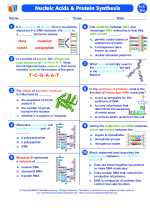Kinetic Energy
Kinetic energy is the energy an object possesses due to its motion. The kinetic energy of an object depends on both its mass and its speed. The formula for kinetic energy is:
KE = 0.5 * m * v2
- KE = kinetic energy (in joules)
- m = mass of the object (in kilograms)
- v = velocity of the object (in meters per second)
From the formula, we can see that the kinetic energy of an object increases with its mass and with the square of its velocity. This means that an object with a larger mass or a higher velocity will have more kinetic energy.
Factors Affecting Kinetic Energy
1. Mass: The kinetic energy of an object is directly proportional to its mass. A heavier object will have more kinetic energy than a lighter object with the same velocity.
2. Velocity: The kinetic energy of an object is directly proportional to the square of its velocity. This means that doubling the velocity of an object will quadruple its kinetic energy.
Units of Kinetic Energy
The standard unit of kinetic energy is the joule (J). In some cases, the kilogram-meter squared per second squared (kg·m2/s2) is also used as a unit of kinetic energy.
Study Guide
Here are some key points to remember about kinetic energy:
- Kinetic energy is the energy of motion.
- The formula for kinetic energy is KE = 0.5 * m * v2.
- Kinetic energy depends on both the mass and the velocity of an object.
- An object with a larger mass or a higher velocity will have more kinetic energy.
- The standard unit of kinetic energy is the joule (J).
Practice solving problems involving kinetic energy to solidify your understanding of the concept.
.◂Biology Worksheets and Study Guides High School. Nucleic acids and protein synthesis

 Worksheet/Answer key
Worksheet/Answer key
 Worksheet/Answer key
Worksheet/Answer key
 Worksheet/Answer key
Worksheet/Answer key
 Vocabulary/Answer key
Vocabulary/Answer key
 Vocabulary/Answer key
Vocabulary/Answer key
 Vocabulary/Answer key
Vocabulary/Answer key
